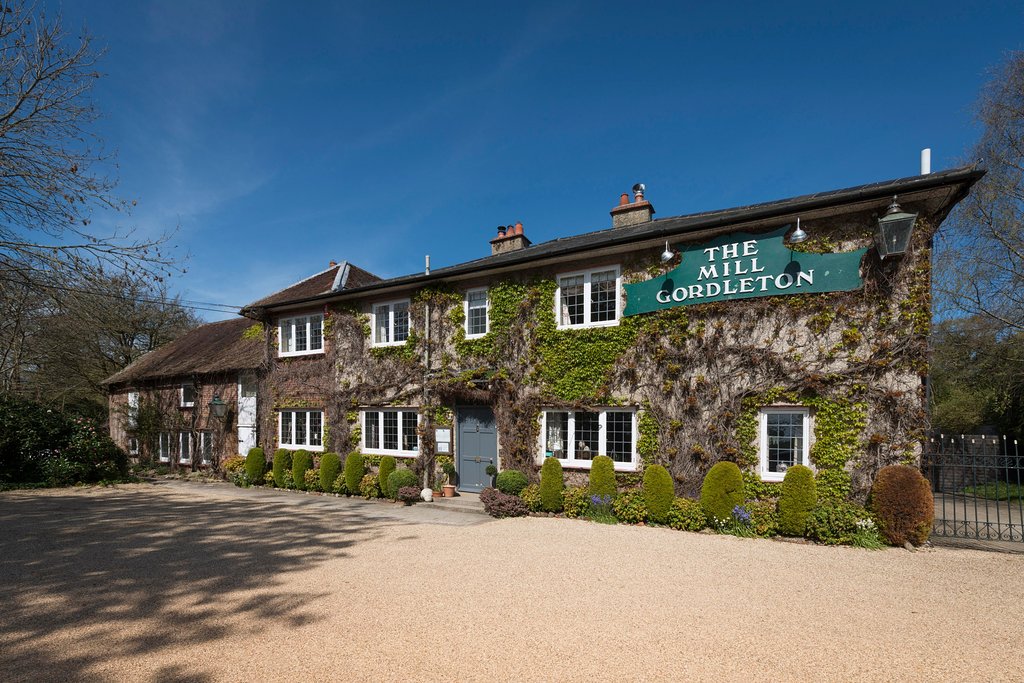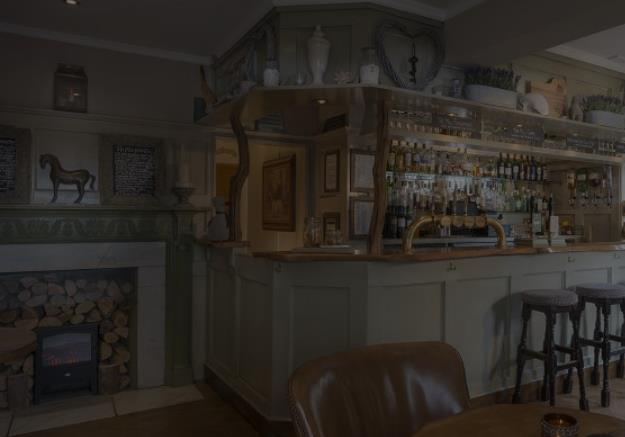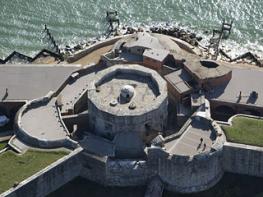No. 84 Brambles Chine is a well-appointed bungalow in Linstone Chine Holiday Village, which has…
Yarmouth and the Yar Velley

A longer loop takes you out by the marshes of the Yar Valley to Yarmouth
4.1 miles (6.7kms)
About the walk
This walk up the Yar Estuary from the historic town of Yarmouth to Freshwater village is a delight, and can be done easily on a day-trip from the mainland. Lymington pier has a rail link and car park, and the Wightlink ferries leave every hour, taking just 40 minutes to cross the Solent. Yarmouth itself has interesting little shops, historic corners to explore and lots of places to eat. Arriving from the water gives you the best views of the solid, square castle, beside the ferry pier, built by Henry VIII to fend off the threat of a French invasion. Look out from the side of the ferry for the later date of 1609 scratched into one of the triangular stone piers on the wall, indicating modifications that took place at the start of the 17th century.
As you stroll around the attractive streets with their fishermen’s cottages and splendid (if diminutive) municipal buildings, it’s hard to believe that Yarmouth, essentially a medieval fishing port, was for centuries at the forefront of the wars with European neighbours. It was walled, and the natural inlets created by the river were rechanneled at one time to create a complete moat around the town but, despite its best defences, Yarmouth was sacked at least twice by French marauders, in 1377 and 1544.
Sir Robert Holmes
A key player in the town’s fortunes was the flamboyant Robert Holmes, Irishborn sailor and buccaneer. You’ll find his likeness in St James’ church. Having overhauled a French ship on its way to deliver a marble self-portrait statue to Louis XIV, Holmes had the captive sculptor chisel his own face onto the ready-carved body. Holmes became Governor of the Isle of Wight in 1668, and profited hugely from piracy against the French and Dutch. He built a grand house (now The George Hotel), entertaining Charles II on several occasions, and remodelled the castle before his death in 1692.
Birdlife abounds on the expanse of saltings and mudflats of the Yar Estuary at low tide. As well as the common waders, look for the curlew and whimbrel probing the mudflats, the red legs of the redshank, and, in winter, the flocks of brent geese feeding in neighbouring fields.
Walk directions
With the harbour to your left, turn right at the ferry office. As you pass the entrance to the castle on your left, it’s worth a quick look down the alley even if you don’t plan to visit (open April–October, dogs welcome). Pass Salty’s Seafood Restaurant and the solid flank of The George Hotel to enter the square – actually three squares, named after the pier, the market and the church. Turn left to explore the wooden pier (toll payable), built in 1876 to accommodate tourists arriving by steamer and at 700ft (213m) one of the longest of its kind. Walk past The Bugle Coaching Inn, with the tiny redbrick town hall of 1763 on your right, to visit St James’ church. Backtrack up the square and turn right down the High Street, then right again down South Street, passing charming Alma Place.
At the main road (Tennyson Road) turn right, cross over and continue towards the harbour. Turn left down Mill Road, and keep ahead on the gravel footpath (signed Y1) towards the old tide mill, built in 1793 to harness the tidal flow of the estuary. Cross a stile in front of the mill, ignoring the footpath left (Y2), and continue straight ahead.
Go through a gap by a bench and gate and turn right onto the former railway track, now a cycle path. Follow this for 1.5 miles (2.4km). The open marsh view, with Mill Copse to the left, and Kings Manor Farm on the opposite riverbank ahead, soon disappears as low oak woodland closes overhead, the trees laiden with honeysuckle, wild rose and ivy.
On reaching the old stone bridge of The Causeway by Tideways Cottage, turn right and follow the winding road, passing a pillbox, to All Saints church in Freshwater village. The church has various Tennyson family memorials, and a magnificent ancient brass of Adam de Compton set in the wall by the organ pipes. Take the waymarked path, signed ‘Freshwater Way and F1’, between The White Cottage and the churchyard wall. Go through a gate and along a gravel path. At a kissing gate, continue ahead up the tarmac road, passing the back of a row of bungalows and then a campsite with yurts on the left.
Turn left before the farm entrance, through a gate, and bear right along the edge of two fields to a gate leading into woodland. Emerge through a gate, cross over a drive and continue ahead up the gravel track, which leads between fields. Follow the track through a small wood and turn right up the field edge when leaving the wood. At the next gap in the hedge, with a gate on your right, turn left up the side of the field to a kissing gate to a path between field and wood. Go through a gate and descend into another woodland.
Meet a track (Gasworks Lane) and turn left, signed ‘Freshwater Way and F1’. Follow this past Norlands Cottage to the A3054. Turn right and follow the pavement up over the bridge and past the busy harbour, back into Yarmouth. Turn left for the ferry terminal.
Additional information
Town streets, but mostly clear gravel paths
Marshes, woodland and rolling farmland
Riverside trail great for dogs, but beware cyclists
OS Explorer OL29 Isle of Wight
On mainland by ferry terminal in Lymington (pay-and-display); in Yarmouth Long Stay Car Park or by harbour (pay-and-display)
In ferry terminal for travellers, otherwise none on route
This island walk can be started from Lymington on the mainland.
WALKING IN SAFETY
Read our tips to look after yourself and the environment when following this walk.
Find out more
Also in the area
About the area
Discover Isle of Wight
There’s a timeless quality to the Isle of Wight. For many it embodies the spirit and atmosphere of English seaside holidays. Small and intimate – at just 23 miles by 13 miles – it’s a great place to get away from it all. And with its mild climate, long hours of sunshine and colourful architecture, it has something of a continental flavour.
Explore the island’s varied coastline at any time of the year using the well-established Coast Path. Even in the depths of winter, the weather conditions are often favourable for walking. The island has more than 500 miles of public rights of way in all. There are numerous other things to do too. You could plan a week’s itinerary and not set foot on the beach. The island’s history is fascinating and it was long considered as a convenient stepping stone for the French in their plan to invade the UK mainland. Various fortifications – including Fort Victoria, Carisbrooke Castle and Yarmouth Castle – reflect its key strategic role in the defence of our coastline.
Nearby stays
Restaurants and Pubs
Nearby experiences
Recommended things to do
Why choose Rated Trips?
Your trusted guide to rated places across the UK
The best coverage
Discover more than 15,000 professionally rated places to stay, eat and visit from across the UK and Ireland.
Quality assured
Choose a place to stay safe in the knowledge that it has been expertly assessed by trained assessors.
Plan your next trip
Search by location or the type of place you're visiting to find your next ideal holiday experience.
Travel inspiration
Read our articles, city guides and recommended things to do for inspiration. We're here to help you explore the UK.
















